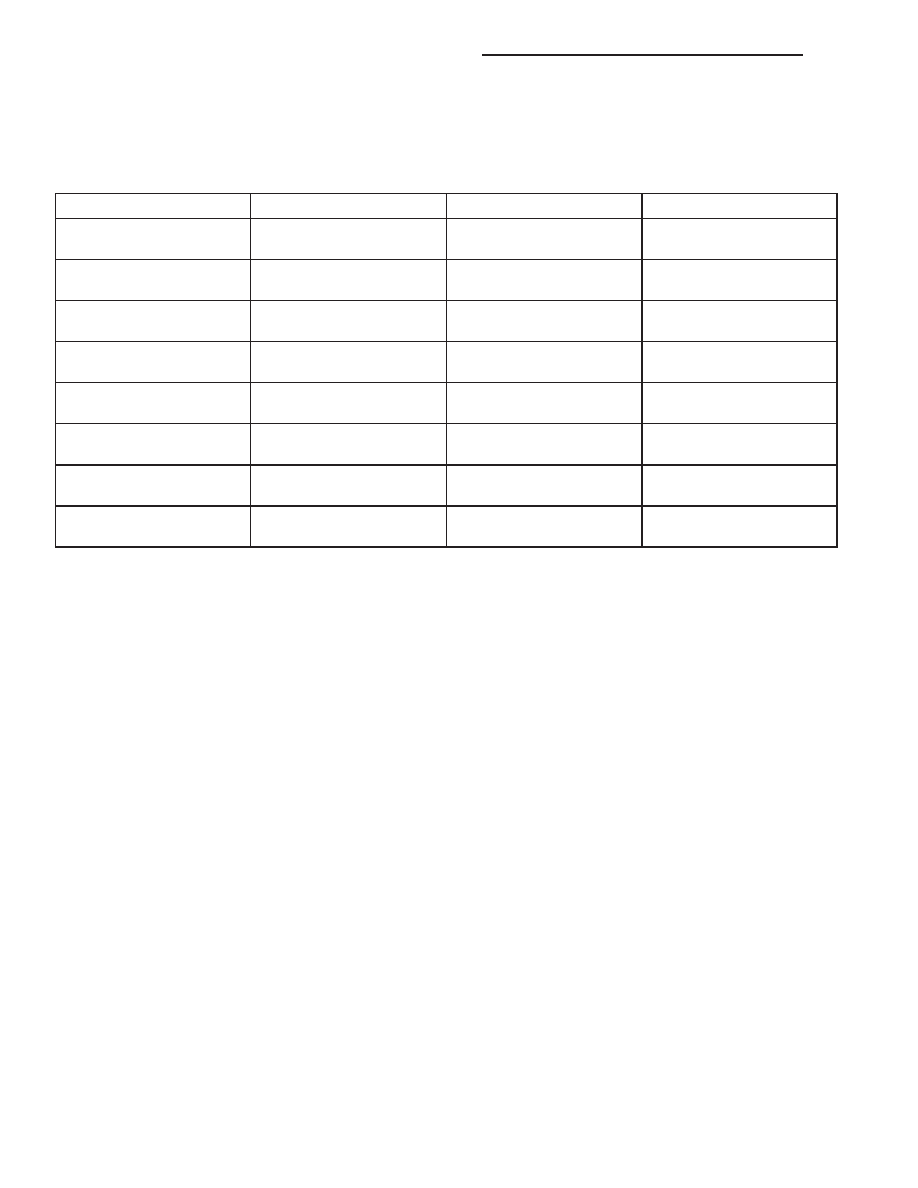Jeep Liberty KJ. Manual - part 311

SPECIFICATIONS
WIPER & WASHER SYSTEMS
TORQUE SPECIFICATIONS
DESCRIPTION
N·m
Ft. Lbs.
In. Lbs.
Rear Wiper Motor Output
Shaft Mounting Nut
5
-
43
Rear Wiper Motor
Mounting Screws
6
-
57
Washer Reservoir
Mounting Screws
7
-
65
Front Wiper Arm Mounting
Nuts
24
18
-
Rear Wiper Arm Mounting
Nut
18
13
-
Rear Wiper Arm Park
Ramp Mounting Screw
5
-
45
Front Wiper Module
Mounting Screws
8
-
72
Front Wiper Module
Mounting Nuts
8
-
72
8R - 36
WIPERS/WASHERS - SERVICE INFORMATION
KJ